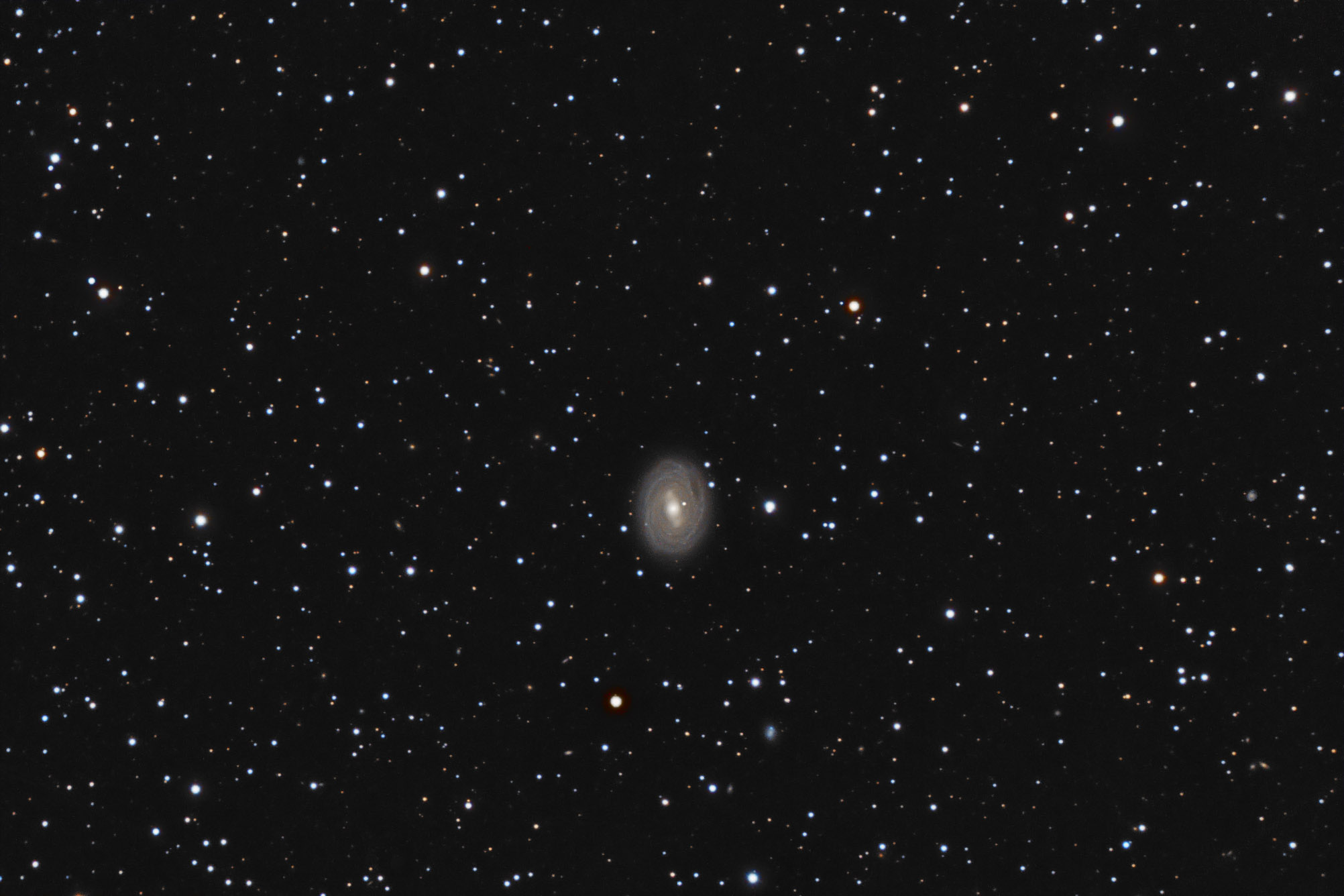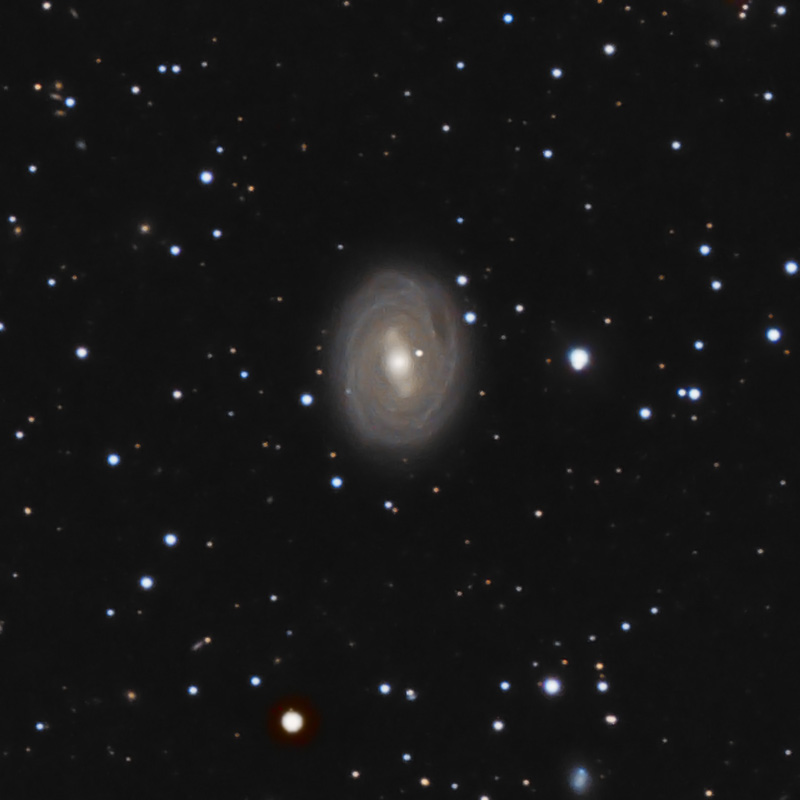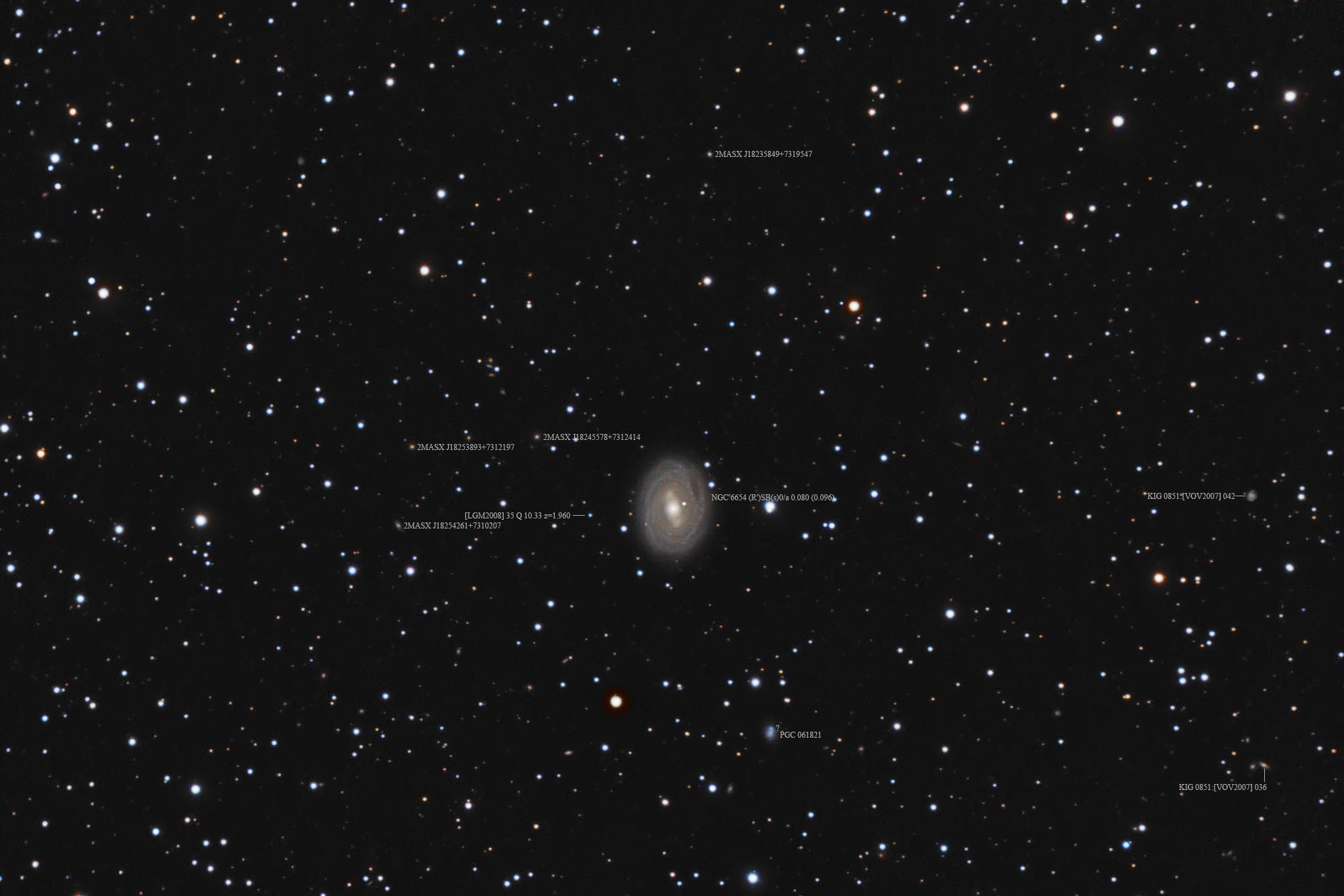| Description | Images |
Object name: NGC6654Designation(s): NGC6654, NGC 6654 is a rather strange galaxy in Draco. It's distance isn't well known. Redshift puts it at about 80 million light-years distant though a single Tully measurement says 96 million. Assuming the 80 million light-year distance it is about 63,000 light-years in diameter. NED classifies it as (R')SB(s)0/a while others say simply SB0 or something in-between. In any case, all see it as a barred galaxy. One paper even says it has two bars the obvious one and a much smaller inner one at a somewhat different angle. Oddly my image, however, sees it not as a bar at all but an inner "Saturn-like" ring rather than a bar. I find few images on the net to help here. The disk shows a faint spiral structure with an odd dark area to the northwest. It was that odd gap that caused me to put it on the to-do list. The galaxy was discovered by Lewis Swift on September 11, 1883. Related Designation(s):2MASS J18240759+7310595, 2MASX J18240752+7310597, 2MIG 2502, CGCG 1825.2+7309, CGCG 340-045, CGPG 1825.2+7309, IRAS F18251+7309, ISOSS J18240+7310, KIG 0851, KIG 0851:[VOV2007] 035, MCG +12-17-023, NGC 6654, NGC6654, PGC 061833, UGC 11238, UZC J182407.6+731059, VII Zw 793, [SLK2004] 1466, |


